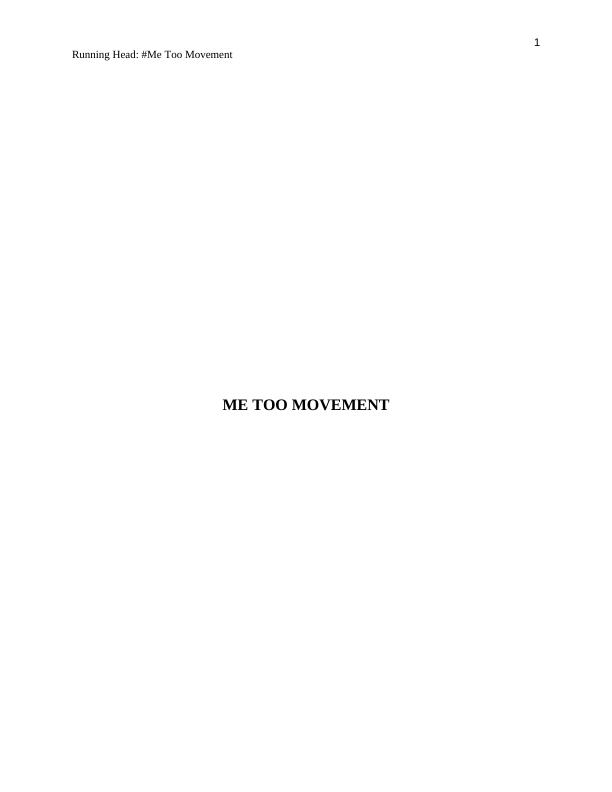#Me Too Movement
6 Pages1573 Words58 Views
Added on 2023-04-10
About This Document
This article discusses the origins, impact, and organizational methods of the #MeToo movement. It explores how the movement has brought attention to sexual abuse and workplace harassment and has empowered women to share their stories. The article also highlights the role of social media in amplifying the voices of victims and the collaboration between the #MeToo and #Time'sUp movements.
#Me Too Movement
Added on 2023-04-10
ShareRelated Documents
End of preview
Want to access all the pages? Upload your documents or become a member.
The Movement of #MeToo: A Powerful Force for Social Change
|10
|2735
|101
International Journal of Innovation
|4
|709
|20
Hashtag Campaigns
|9
|932
|80
Is the #Me-too movement relevant to organizations?
|8
|1885
|164
Assignment on sociology PDF
|8
|2143
|71
#MeToo Movement: Empowering Survivors of Sexual Harassment
|5
|1280
|153



